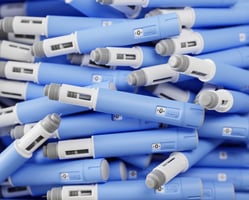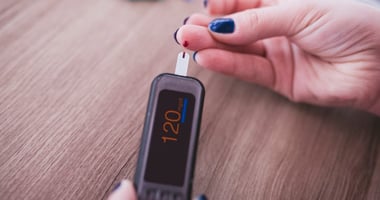Big babies may share an increased risk of eventually developing schizophrenia. Researchers in...
Risk of Type 2 Diabetes Among Youth Who Initiate SSRI Treatment Found to Be Small
 |
“The magnitude of association was more modest than previously reported, and the absolute risk was small,” wrote Jenny Sun, Ph.D., and Sonia Hernández-Díaz, M.D., Dr.P.H., of the Harvard T.H. Chan School of Public Health and colleagues. “This potential risk, which is much lower in magnitude than the other known risk factors for [type 2 diabetes], should be weighed against the known benefits and risks of SSRI treatment to help inform treatment decision-making in the pediatric population.”
Researchers used U.S. claims data on more than 1.5 million patients from two databases. The Medicaid Analytic eXtract (MAX) database included information from 2000 to 2014 of patients enrolled in Medicaid and the Children’s Health Insurance Program. The IBM MarketScan database consisted of information from 2003 to 2015 of privately insured patients. Patients with evidence of antidepressant use, diabetes-related conditions, pregnancy, hospice care, or serious medical conditions were excluded.
Researchers identified patients aged 10 to 19 with diagnoses commonly treated with SSRIs, such as depression, generalized or social anxiety disorder, panic disorder, or obsessive-compulsive disorder. They compared patients who initiated SSRI treatment with those who had a diagnosis indicating such treatment, but who had not initiated treatment.
In total, 316,178 patients initiated SSRI treatment in the MAX database group, and 211,460 started the treatment in the IBM group. Among publicly insured patients, the rate of type 2 diabetes was 2.32 cases per 1,000 person-years among those patients who initiated SSRI treatment, and 1.65 cases per 1,000 person-years among those patients who did not receive the treatment. The association strengthened with longer treatment periods, corresponding to 6.6 additional cases of type 2 diabetes per 10,000 patients continuously treated for at least two years. There was no meaningful increased risk for type 2 diabetes among privately insured patients.
“The increased risk of [type 2 diabetes] was observed in publicly insured patients, who are of lower socioeconomic status and represent a population with greater overall medical burden, more comorbidities, and a higher prevalence of risk factors for [type 2 diabetes],” the authors wrote. “When making treatment decisions in young patients, this potential small risk of [type 2 diabetes], along with other potential adverse effects of SSRIs such as nausea and sleep disturbances, should be weighed against the benefits of treating pediatric depression and anxiety disorders.”
For more information, see the Psychiatric News article “Exposure to Antipsychotics May Increase Risk of Type 2 Diabetes in Youth.”
(Image: iStock/Brain)





